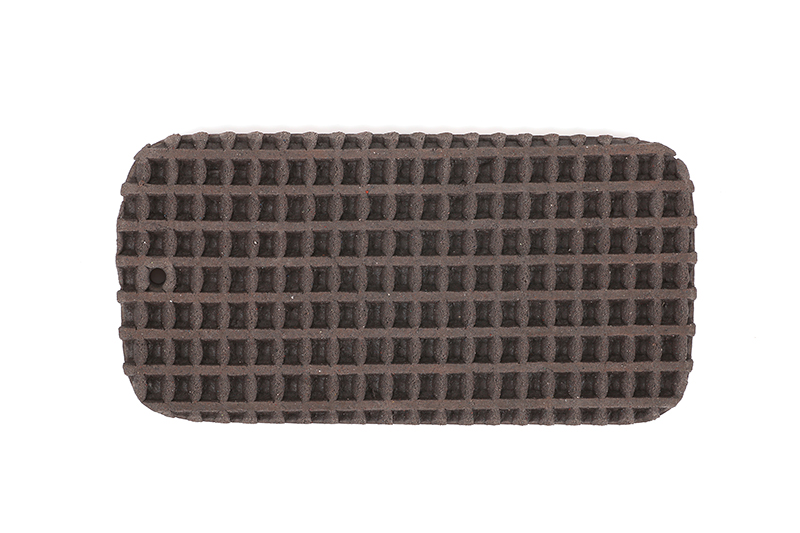Aug . 08, 2024 08:50 Back to list
Exploring the Benefits of Recycled Rubber Flooring for Safe and Durable Playground Surfaces
The Benefits of Recycled Rubber Flooring for Playgrounds
In recent years, the shift towards sustainability has led many industries to rethink their materials and practices. One area seeing significant benefits from this trend is playground design. Recycled rubber flooring has emerged as a popular choice for playground surfaces, offering numerous advantages that enhance safety, durability, and environmental responsibility.
Safety First
One of the primary concerns for any playground is the safety of its users, particularly young children who may fall while playing. Recycled rubber flooring is designed with impact absorption in mind. Unlike traditional surfaces such as concrete or asphalt, recycled rubber can effectively cushion falls, significantly reducing the risk of injury. This type of flooring is often tested and rated for critical fall heights, ensuring that children can play safely.
In addition to its impact-resilient properties, recycled rubber flooring provides a non-slip surface. The texture of the rubber helps to prevent slips and falls, even when wet, making it an ideal choice for high-traffic playgrounds that may also experience rain or spills. By prioritizing safety through the use of recycled rubber, playground designers can create environments where parents feel confident in allowing their children to explore and play freely.
Durability and Maintenance
Another significant advantage of recycled rubber flooring is its durability. Playground equipment and high foot traffic can take a toll on traditional surfaces, leading to cracks, wear, and the need for frequent replacements. In contrast, recycled rubber flooring is resistant to fading, cracking, and other forms of deterioration, ensuring a long-lasting surface that can withstand the elements and heavy use.
Furthermore, maintenance of recycled rubber flooring is generally straightforward and cost-effective. Unlike wood chips, sand, or grass, which require regular replenishing and cleaning, recycled rubber requires less upkeep. It can be easily cleaned with a hose, and its resilient nature means that it stays intact through various weather conditions. This reduces the need for regular maintenance costs, making it a smart financial choice for schools and communities.
recycled rubber flooring for playgrounds

Environmental Responsibility
The environmental benefits of recycled rubber flooring extend beyond its long-lasting nature. This flooring is primarily made from post-consumer and post-industrial rubber, such as used tires. By repurposing these materials, recycled rubber flooring contributes to reducing waste in landfills, promoting a circular economy. The production process for recycled rubber flooring generally consumes less energy compared to creating new products from raw materials.
By opting for recycled rubber flooring, playgrounds can also educate communities about sustainability practices. Incorporating green initiatives into local parks and recreational areas sets an example and encourages families to think more about their environmental footprint. This awareness can inspire better practices in waste disposal and recycling throughout the community.
Aesthetic Appeal
In addition to its practical benefits, recycled rubber flooring offers an array of aesthetic possibilities. Available in various colors, textures, and patterns, recycled rubber can be customized to fit the theme of any playground. Bright colors can stimulate children's creativity and imagination, while patterns can add visual interest. This versatility ensures that landscapes are not only functional and safe but also visually engaging for children and families.
Conclusion
Recycled rubber flooring presents an ideal solution for playgrounds seeking to enhance safety, durability, and environmental responsibility. With its impact-absorbing properties, low maintenance requirements, and aesthetic versatility, recycled rubber flooring is proving to be a valuable addition to outdoor play spaces. As communities continue to prioritize sustainability, the trend towards recycled materials—such as rubber—will likely grow, paving the way for safer, more responsible playgrounds for future generations.
-
Premium Basketball Board Stand with GPT-4-Turbo AI
NewsJul.31,2025
-
Premium Maple Flooring for Gyms & Homes | PVC & Vinyl Options
NewsJul.30,2025
-
Premium Outdoor Basketball Court Tiles for All Weather Use
NewsJul.30,2025
-
Durable Basketball Board Stand for Indoor & Outdoor Use
NewsJul.29,2025
-
Durable Pickleball Court Tiles for Outdoor Sport Courts
NewsJul.29,2025
-
Premium PVC Vinyl Flooring for Homes & Gyms – Eco & WPC Options
NewsJul.29,2025

